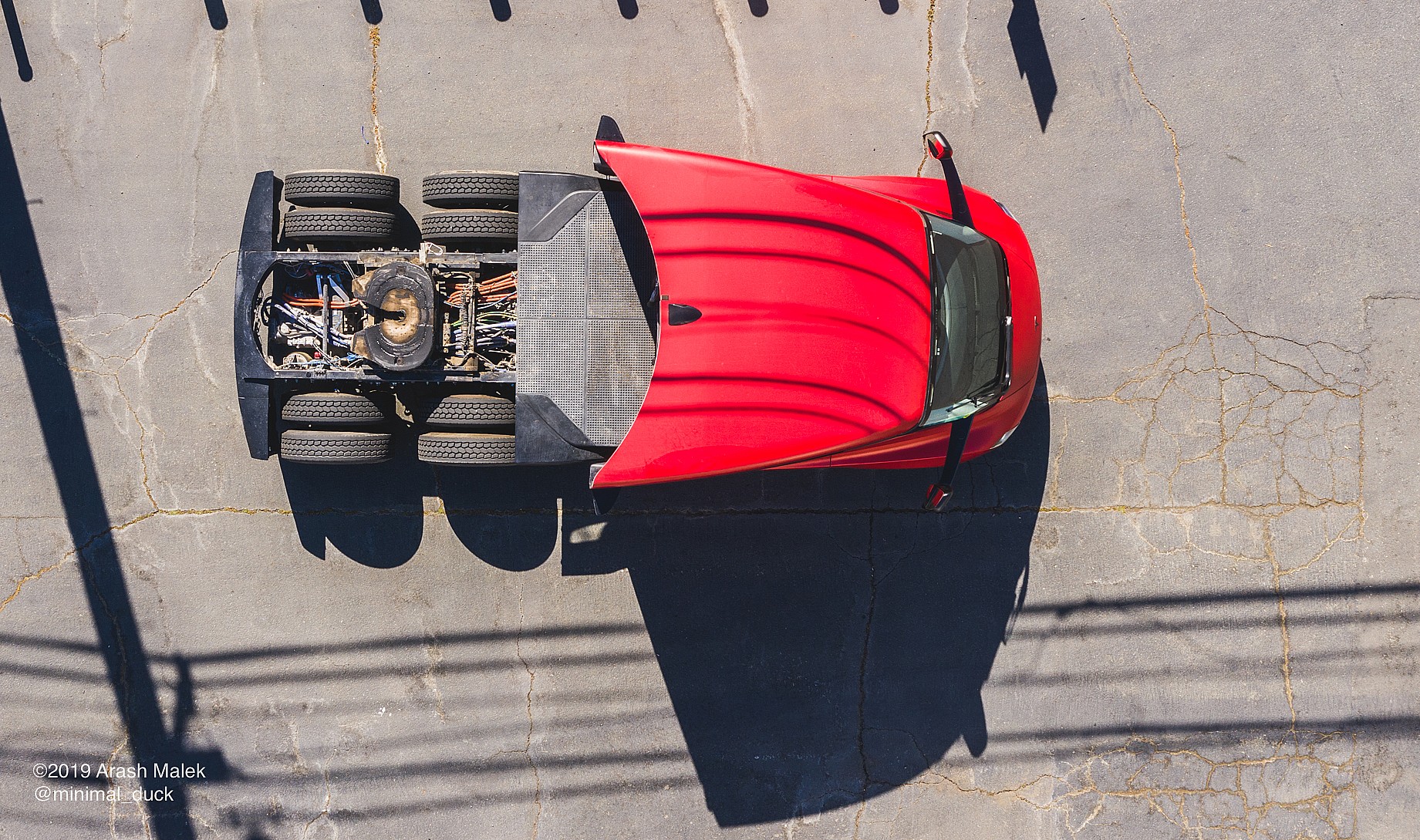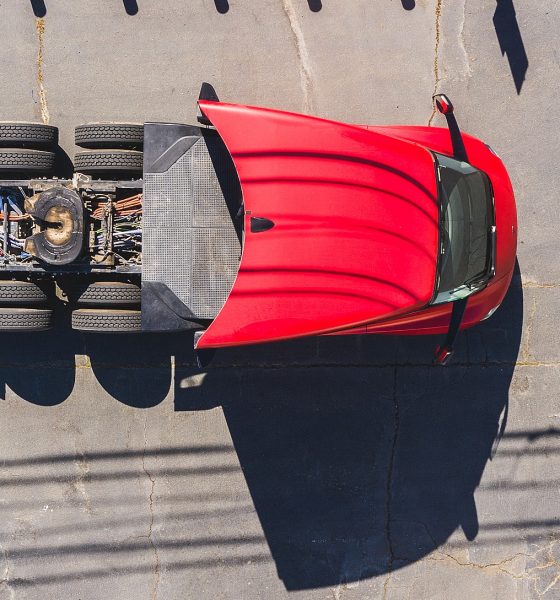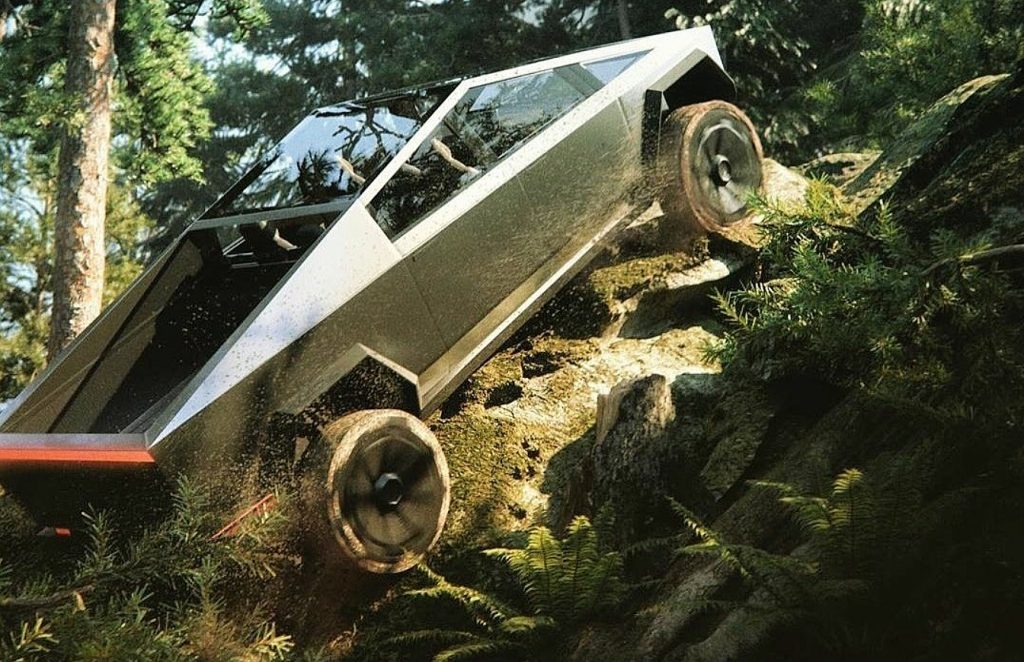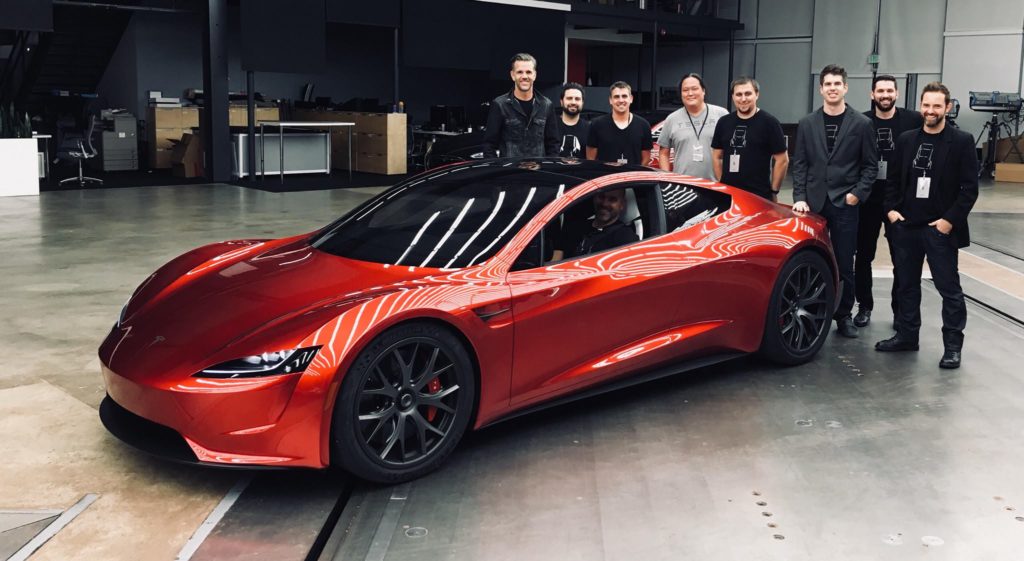

News
Tesla’s next ‘big unveil’ after Model Y will be its battery growth story
Tesla’s 2020 is bound to be a historic year, for more reasons than initially expected. Unlike 2017 and 2019, which were marked by impressive product unveiling events for the Semi, next-gen Roadster, Model Y, and Cybertruck, 2020 is poised to be a year where Tesla simply optimizes its operations to such a point that the company becomes sustainably profitable.
Save for 2018, Tesla has adopted the practice of unveiling new vehicles and energy products in a steady stream. This will not be the case this year, since Elon Musk himself has noted following the Cybertruck’s unveiling event that Tesla will not be holding formal vehicle launches for a while. The Model S Plaid is expected to be rolled out later this year, but the vehicle’s launch could be similar to that of the Raven Model S and X — subtle and simple.
Unlike previous years, Tesla will likely not be focusing too much on the rollout of an upcoming vehicle after initial Model Y deliveries are conducted. With the all-electric crossover being manufactured and delivered to customers, Tesla will likely end up focusing its resources on strengthening its core technology, particularly its batteries. This will partly be due to the arrival of three vehicles that are set to be released soon: the Tesla Semi, the next-gen Roadster, and the Cybertruck.
Part of the reason behind the Model Y’s quicker than expected production ramp is due to the vehicle’s similarity to the Model 3. The two midsize EVs share 75% of their parts, which meant that their production process is not too different from each other. Tesla learned a hard lesson with the Model X and the Model S by over-designing the SUV and making it far too different compared to its sedan sibling, which resulted in massive production delays. This lesson appears to have been learned and adopted for the Model Y ramp.

But Tesla’s next three vehicles are not quite as simple as the Model Y in terms of their battery tech and production processes. While the Model Y will likely use the same battery packs as its Model 3 sibling, the Semi, Cybertruck, and new Roadster do not. In fact, due to their specs and features, each of these new vehicles will likely be equipped with batteries that hold Tesla’s best and latest innovations, and they be built on platforms that are new and specifically designed for each vehicle.
The Semi, for example, is a Class 8 long-hauler that has a range of 300-500 miles per charge. Its capability to haul 80,000 pounds of weight on the road is no joke, and the vehicle’s near-sports car performance suggests that the Semi requires a very large battery pack. Tesla has not revealed the size of the batteries in the two Semi prototypes that are undergoing real-world testing today, but speculations from the EV community go as high as 1 MWh due to the truck’s weight. With better battery efficiency, optimized software, and higher energy density in its cells, Tesla may be able to achieve the Semi’s long-range targets without necessarily using as many batteries as a small fleet of Model 3s.
The Cybertruck is not as large as the Semi, but it seems to require some notable battery improvements as well due to its price and specs. A top-tier Cybertruck costs below $70,000, and for that price, Tesla is offering over 500 miles of range per charge. Considering that the all-electric pickup truck is not exactly as sleek as the Model S in terms of aerodynamics, achieving such a range will likely require the all-electric pickup to have a pretty hefty battery. Batteries are usually considered as one of the most expensive parts of an EV, so it would be interesting to see just how low Tesla can push its battery prices down to make a behemoth of an EV go over 500 miles at a sub-$70,000 price.

The next-gen Roadster may only be seeing a production rate of about 10,000 per year, according to Elon Musk, but the vehicle still requires improvements in its batteries to become a definitive “hardcore smackdown to gasoline cars.” This is because the Roadster was announced with a 200-kWh battery pack that provides 620 miles of range. Tesla was at a different place when it announced the next-gen Roadster’s specs. Hence, it would not be a stretch to speculate that the production version of the all-electric supercar will either have a slightly smaller but more energy-dense battery that still provides 620 miles of range, or a 200 kWh battery pack that offers far beyond 1,000 km in one charge.
Tesla’s growth story is usually tied to the company’s release of one best-selling electric vehicle after another. But this year, after the Model Y, Tesla’s growth story will become more of a battery-driven narrative. The company’s battery tech will ultimately determine whether or not the Semi, Cybertruck, and new Roadster will be a success. But if Tesla’s batteries are up for the task, the company’s disruption of the auto industry will likely end up accelerating even more.
What’s pretty interesting to note is that all these potential battery-related breakthroughs also apply towards Tesla’s Energy business, which is rarely even considered by Wall Street when analysts evaluate the company. Every battery-related milestone that is rolled out to the company’s vehicles is also introduced to its energy storage devices. With this in mind, it is not too farfetched to speculate that this year may also end up becoming a renaissance of sorts for Tesla Energy. Part of this push could involve the introduction of slightly smaller but more energy-dense residential batteries and a line of cheaper energy storage units that are just as good as the company’s current products.
This sounds like another disruption in the making.

Elon Musk
Delaware Supreme Court reinstates Elon Musk’s 2018 Tesla CEO pay package
The unanimous decision criticized the prior total rescission as “improper and inequitable,” arguing that it left Musk uncompensated for six years of transformative leadership at Tesla.

The Delaware Supreme Court has overturned a lower court ruling, reinstating Elon Musk’s 2018 compensation package originally valued at $56 billion but now worth approximately $139 billion due to Tesla’s soaring stock price.
The unanimous decision criticized the prior total rescission as “improper and inequitable,” arguing that it left Musk uncompensated for six years of transformative leadership at Tesla. Musk quickly celebrated the outcome on X, stating that he felt “vindicated.” He also shared his gratitude to TSLA shareholders.
Delaware Supreme Court makes a decision
In a 49-page ruling Friday, the Delaware Supreme Court reversed Chancellor Kathaleen McCormick’s 2024 decision that voided the 2018 package over alleged board conflicts and inadequate shareholder disclosures. The high court acknowledged varying views on liability but agreed rescission was excessive, stating it “leaves Musk uncompensated for his time and efforts over a period of six years.”
The 2018 plan granted Musk options on about 304 million shares upon hitting aggressive milestones, all of which were achieved ahead of time. Shareholders overwhelmingly approved it initially in 2018 and ratified it once again in 2024 after the Delaware lower court struck it down. The case against Musk’s 2018 pay package was filed by plaintiff Richard Tornetta, who held just nine shares when the compensation plan was approved.
A hard-fought victory
As noted in a Reuters report, Tesla’s win avoids a potential $26 billion earnings hit from replacing the award at current prices. Tesla, now Texas-incorporated, had hedged with interim plans, including a November 2025 shareholder-approved package potentially worth $878 billion tied to Robotaxi and Optimus goals and other extremely aggressive operational milestones.
The saga surrounding Elon Musk’s 2018 pay package ultimately damaged Delaware’s corporate appeal, prompting a number of high-profile firms, such as Dropbox, Roblox, Trade Desk, and Coinbase, to follow Tesla’s exodus out of the state. What added more fuel to the issue was the fact that Tornetta’s legal team, following the lower court’s 2024 decision, demanded a fee request of more than $5.1 billion worth of TSLA stock, which was equal to an hourly rate of over $200,000.
Delaware Supreme Court Elon Musk 2018 Pay Package by Simon Alvarez
News
Tesla Cybercab tests are going on overdrive with production-ready units
Tesla is ramping its real-world tests of the Cybercab, with multiple sightings of the vehicle being reported across social media this week.

Tesla is ramping its real-world tests of the Cybercab, with multiple sightings of the autonomous two-seater being reported across social media this week. Based on videos of the vehicle that have been shared online, it appears that Cybercab tests are underway across multiple states.
Recent Cybercab sightings
Reports of Cybercab tests have ramped this week, with a vehicle that looked like a production-ready prototype being spotted at Apple’s Visitor Center in California. The vehicle in this sighting was interesting as it was equipped with a steering wheel. The vehicle also featured some changes to the design of its brake lights.
The Cybercab was also filmed testing at the Fremont factory’s test track, which also seemed to involve a vehicle that looked production-ready. This also seemed to be the case for a Cybercab that was spotted in Austin, Texas, which happened to be undergoing real-world tests. Overall, these sightings suggest that Cybercab testing is fully underway, and the vehicle is really moving towards production.
Production design all but finalized?
Recently, a near-production-ready Cybercab was showcased at Tesla’s Santana Row showroom in San Jose. The vehicle was equipped with frameless windows, dual windshield wipers, powered butterfly door struts, an extended front splitter, an updated lightbar, new wheel covers, and a license plate bracket. Interior updates include redesigned dash/door panels, refined seats with center cupholders, updated carpet, and what appeared to be improved legroom.
There seems to be a pretty good chance that the Cybercab’s design has been all but finalized, at least considering Elon Musk’s comments at the 2025 Annual Shareholder Meeting. During the event, Musk confirmed that the vehicle will enter production around April 2026, and its production targets will be quite ambitious.
News
Tesla gets a win in Sweden as union withdraws potentially “illegal” blockade
As per recent reports, the Vision union’s planned anti-Tesla action might have been illegal.

Swedish union Vision has withdrawn its sympathy blockade against Tesla’s planned service center and showroom in Kalmar. As per recent reports, the Vision union’s planned anti-Tesla action might have been illegal.
Vision’s decision to pull the blockade
Vision announced the blockade in early December, stating that it was targeting the administrative handling of Tesla’s facility permits in Kalmar municipality. The sympathy measure was expected to start Monday, but was formally withdrawn via documents sent to the Mediation Institute and Kalmar Municipality last week.
As noted in a Daggers Arbete report, plans for the strike were ultimately pulled after employer group SKR highlighted potential illegality under the Public Employment Act. Vision stressed its continued backing for the Swedish labor model, though Deputy negotiation manager Oskar Pettersson explained that the Vision union and IF Metall made the decision to cancel the planned strike together.
“We will not continue to challenge the regulations,” Petterson said. “The objection was of a technical nature. We made the assessment together with IF Metall that we were not in a position to challenge the legal assessment of whether we could take this particular action against Tesla. Therefore, we chose to revoke the notice itself.”
The SKR’s warning
Petterson also stated that SKR’s technical objection to the Vision union’s planned anti-Tesla strike framed the protest as an unauthorized act. “It was a legal assessment of the situation. Both for us and for IF Metall, it is important to be clear that we stand for the Swedish model. But we should not continue to challenge the regulations and risk getting judgments that lead nowhere in the application of the regulations,” he said.
Vision ultimately canceled its planned blockade against Tesla on December 9. With Vision’s withdrawal, few obstacles remain for Tesla’s long-planned Kalmar site. A foreign electrical firm completed work this fall, and Tesla’s Careers page currently lists a full-time service manager position based there, signaling an imminent opening.








